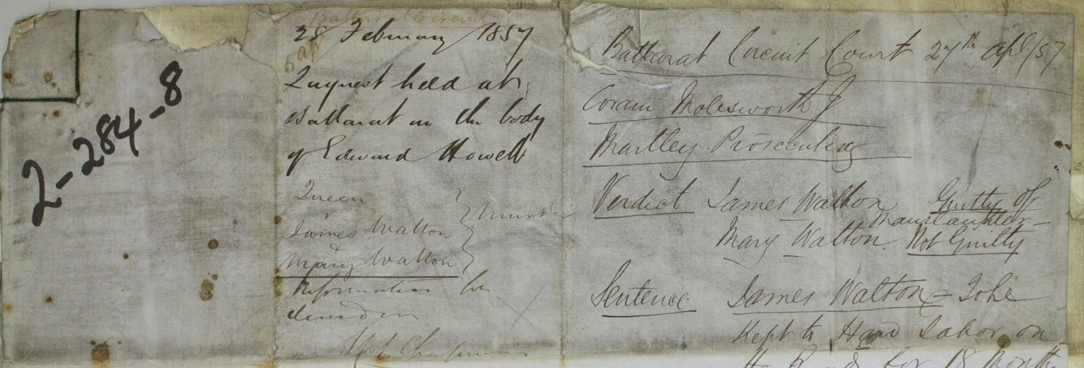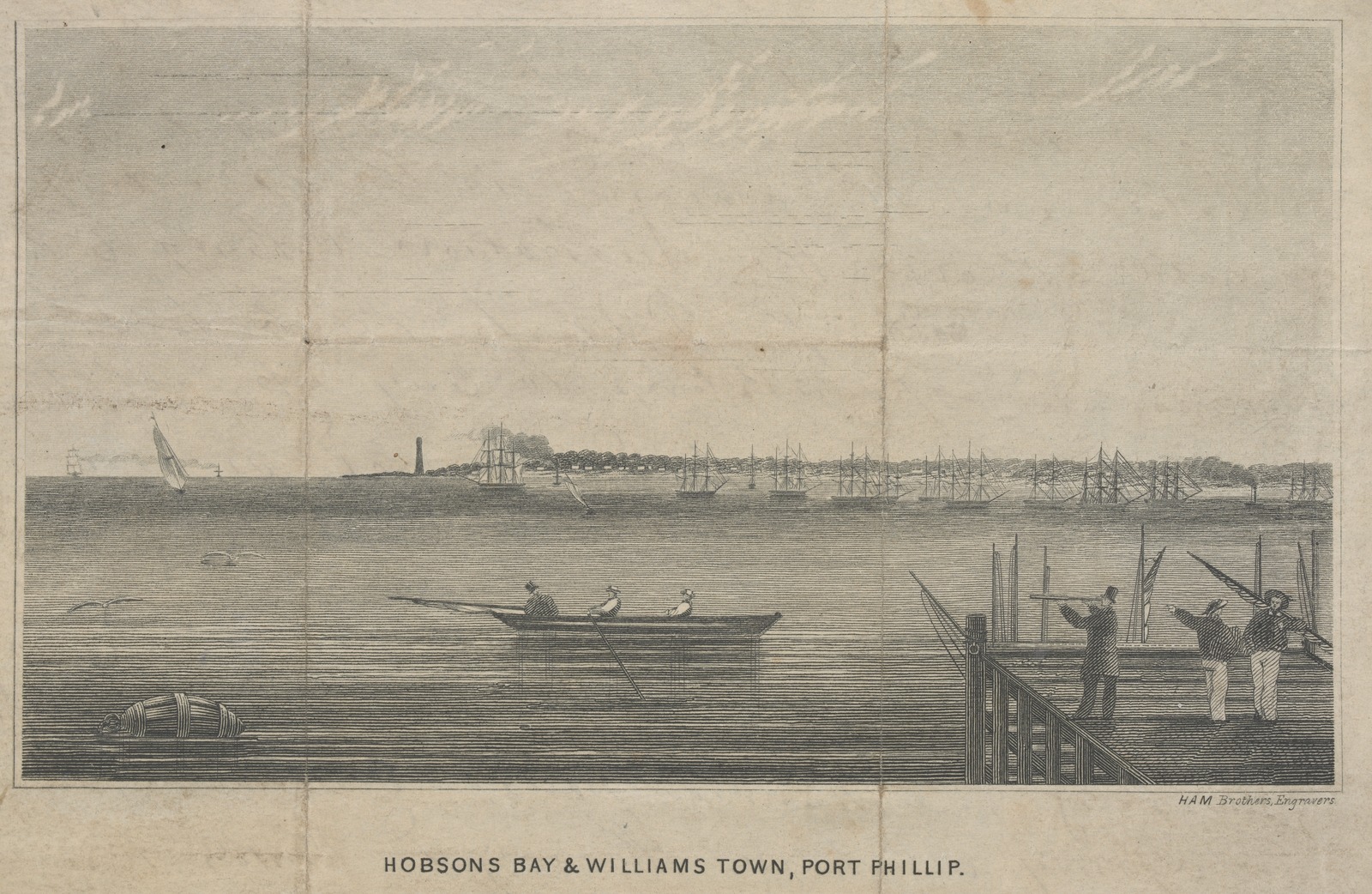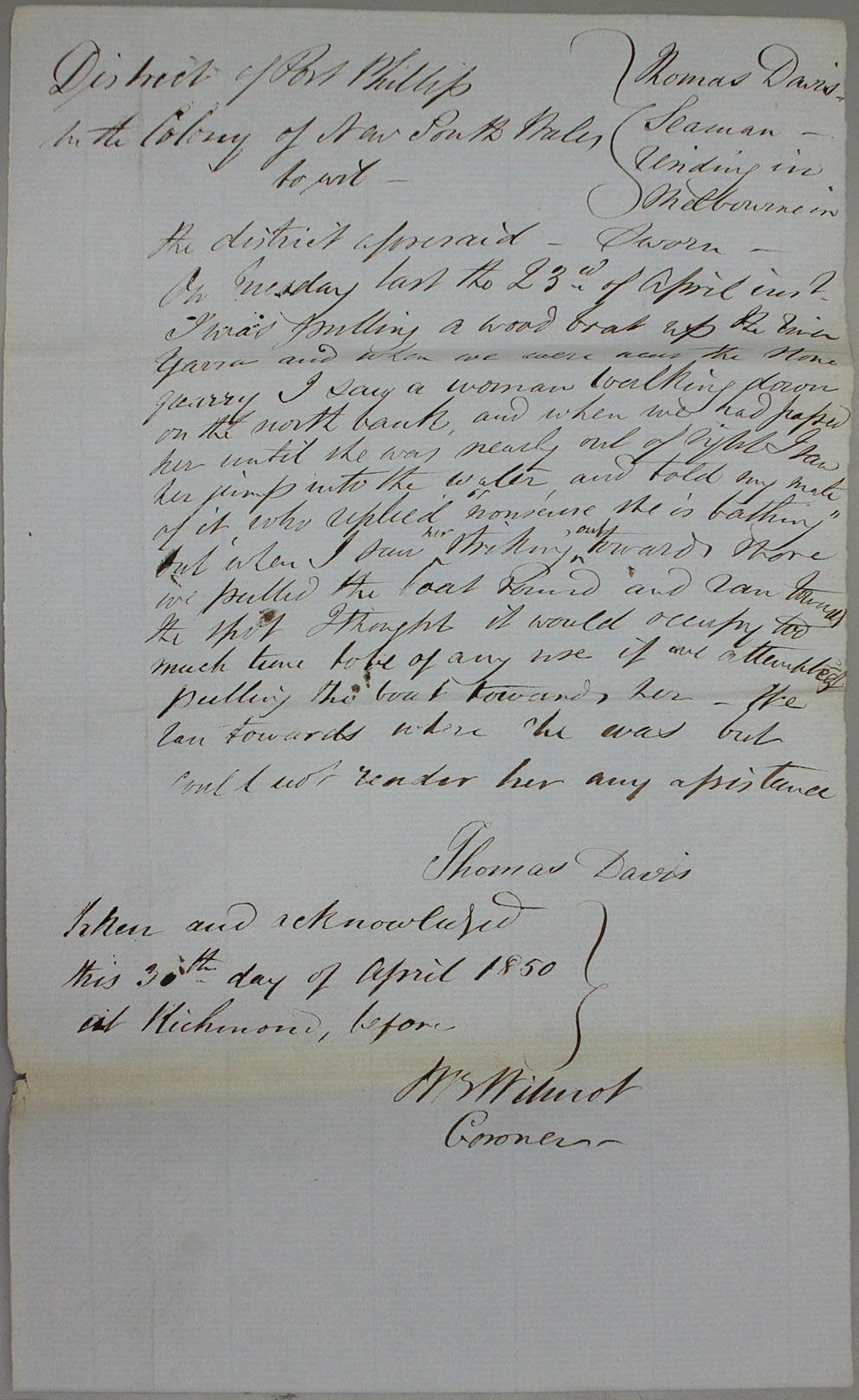
Author: Public Record Office Victoria
On Sunday the 17th of November 2019 the annual Irish Famine Orphan Girls commemoration will be held in Williamstown. (Head to the Irish Famine Orphan Girls Commemoration Facebook page for details).
During the Great Hunger in Ireland (1845-1852), more than 4000 girls were sent to Australia as servants and to help populate the colony – 1700 of them landed at Hobson’s Bay. The vessels conveying the Port Phillip contingent of Orphans were the Lady Kennaway, Pemberton, New Liverpool, Diadem, Derwent and Eliza Caroline. The lengths of the voyages varied – depending mainly on weather conditions – as did the conditions on board each vessel.
Each vessel had a Surgeon Superintendent appointed to oversee health and sanitation on the voyages – he was assisted by a Chief Matron and several sub-Matrons. The Surgeon Superintendent and matrons looked out for the physical, mental and moral well-being of the orphans.
The Famine Rock at Williamstown commemorates their arrival and is the location for music, dancing, and laying of tribute flowers from 2.30pm on November 17th.
Irish Famine Orphan Immigration in PROV’s collection
In 2013 Christine O’Donnell delved into our collection and found a treasure trove of information on the Irish famine orphan girls. At the time, she wrote:
“My obsession with the Irish Famine Orphan Immigration began as a result of being asked to present an Information Session at the Immigration Museum in October 2012 as part of their Leaving Dublin exhibition… the stories that I discovered had me caught hook, line and sinker!! There were stories of good girls who went “bad”, those whose lives were filled with an almost inevitable tragedy, those who vanished and those who made good lives for themselves and the children who followed them.
I began my research with perhaps fifteen stories of girls whose lives told the story of Australia - the most memorable for me are the tragic ones of Alice Ball and Mary Coghlan.”
Here we’ve compiled some of the stories Christine found, starting with the above mentioned Alice Ball.
Content warning: this article includes suicide and murder and may be upsetting for some readers.
Alice Ball, born 1834
Alice Ball arrived on the Diadem on the 18th of January 1850. She had been a nursemaid prior to leaving her native place; she was Episcopalian.1
Alice was received into the Immigration Depot on 12th January 1850 and left there on the 26th. She was engaged as an Apprentice by John Brown, Sailmaker, of Richmond for 12 months at £6 per annum.2
Three short months later, being in “the family way”, she sadly committed suicide by throwing herself in the Yarra River on 23rd April, and despite efforts to rescue and revive her, she was dead at the tender age of sixteen.
According to the eye-witness account of James Craig, approximately an hour before Alice’s drowning he “heard Alice’s employer, Mr Brown and his wife at high words” as they passed his house. Reporting the conversation with Mrs. Brown, Alice had attempted to throw herself in the river the previous week after falling pregnant to Mr. Brown – although, it was said, it wasn’t Mr. Brown’s fault as Alice was a “strumpet” and “everything that was bad.” This same witness gave testimony that Mr. Brown was “unconcerned” about the death and that there “was jealousy on the part of his wife towards the girl”.
Also amongst the witness depositions in the inquest is a short statement by a fellow shipmate of Alice’s on the Diadem – Catherine McCarroll – recalling that Alice “was a quiet orderly girl on board ship.”
The Coroner found that:
“Alice Ball whilst in a state of great mental excitement did throw herself into the River Yarra and was suffocated and drowned in its waters.”3
Isabella Brown, born 1833
Isabella Brown was born in Londonderry, County Derry, Northern Ireland and arrived on the Diadem in 1850, aged 17. She had been a House Servant prior to leaving her native place; she was Presbyterian.4
Isabella was received into the Immigration Depot on 12th January 1850 and left there on 28th. She was employed by Thomas Stevens of Melbourne for six months at £10 per annum5, before marrying Samuel Birch on 1st September 1851.6 They had the following children:
1. Samuel Birch (Junior) died in 1864. According to the Death Certificate7, he was 12 years of age, indicating that he was born in 1852.
2. Elizabeth Jane born in Ballarat in 1855.8
3. Thomas Birch born in Ballarat in 1860.9
Tragically, Samuel Birch (Senior) died in 1862, aged only 30 years, following a farming accident in which he lost his left leg below the knee and died from blood loss and exhaustion.10 Isabella then married John Andrews on the 26th of February 1862.
Mary Coghlan, born 1833
Mary Coghlan arrived on the Eliza Caroline 31 March 1851. She was employed as a House Servant prior to leaving Ireland. She spent 7 days in the Immigrants Depot, 25 days in the Melbourne Depot and 4 days in the Geelong Depot. She was then employed by Mrs. Bouchier, Lime Kilns, Geelong, for £10.11
Although Christine couldn’t initially find a record of a marriage, a descendant of James Walton and Mary Coghlan told Christine that the marriage was registered under the names of James WELTON and Mary CURTLAIN at St. Mary's Church, Geelong in November, 1850. Witnesses were James and Mary Anne Boucher. Possibly the same woman who she was employed by.
Their couple's children were as follows:
Mary (1851-1928), James (1852-1880), Ellen (1855-1862), Sarah (1856-1857), Thomas (1857-1858) and an Unnamed Stillborn (1862).
Mary and James' life together was anything but smooth. They were charged with the murder of Edward Howell on 28 February 1857 after an altercation outside their tent. According to the Ballarat Star:
“The jury found the male prisoner guilty of manslaughter and acquitted the female prisoner, who was at once discharged. The jury, with one exception, recommended the male prisoner to mercy. In passing sentence his Honor said to the male prisoner, you appear to be a man addicted to liquor and using violence to your wife, and that violence perhaps led to her violence to the deceased. This, your violence has resulted in the melancholy result of the loss of the life of a human creature. The jury, with one exception, have recommended you to mercy, and I shall pass a more lenient sentence than I otherwise should do. The sentence of the Court is that you be kept to hard labour on the road for eighteen months.”
Unfortunately it appears that James did not change his ways. In April 1862, he assaulted Mary so viciously that she lost her unborn child and died in the Ballarat Hospital a few days later. James was again charged with manslaughter and sentenced this time to seven years hard labour. 12
Passenger lists
You can see the list of women of each ship by searching the ship name on our passenger list topic page and sorting by date: https://prov.vic.gov.au/explore-collection/explore-topic/passenger-records-and-immigration/assisted-passenger-lists
- Lady Kennaway – 1848
- Pemberton – 1849
- New Liverpool – 1849
- Diadem – 1850
- Derwent – 1850
- Eliza Caroline – 1850
Other PROV resources
You can also explore Immigration Correspondence, wills and probates, hotel licences, inquests, land, prison, court and mental health records to build a picture of your Irish ancestors’ life after arrival.
VPRS 115 Inward Correspondence (Immigration Branch) 1849-1851 is a wonderful source of information about this period. The series contains inward correspondence from Sydney and Melbourne officials such as the Colonial Secretary, the Colonial Treasurer, the Immigration Agents, Emigration Boards reporting on immigrant ships; the Surgeon Superintendents of immigrant ships reporting on the health of immigrants and discussing special inquiries; and from the Health Board. Correspondence from officials also includes instructions and discussions on the immigration regulations and procedures, reports on various ethnic groups of immigrants (ie. Germans), and passenger lists. It also includes letters and applications from persons such as applications for free passage.
References
1 Nominal Passenger List - VPRS 14/P0000/000
2 Disposal List - VPRS 14/P0000/0006
3 Inquest - VPRS 24 / P0, unit 7 item 1850/18
4 Nominal Passenger List - VPRS 14/P0000/000
5 Disposal List - VPRS 14/P0000/0006
6 Marriage Certificate 1851/23586
7 Death Certificate 1864/7126
8 Birth Certificate 1855/10689
9 Birth Certificate 1860/13529
10 Inquest - VPRS 24/ P0 unit 109, item 1862/89 Male
11 Disposal List - VPRS 14/P0000/0005
12 Criminal Trial Brief – VPRS 30/P0000/70 Item 2/248
Material in the Public Record Office Victoria archival collection contains words and descriptions that reflect attitudes and government policies at different times which may be insensitive and upsetting
Aboriginal and Torres Strait Islander Peoples should be aware the collection and website may contain images, voices and names of deceased persons.
PROV provides advice to researchers wishing to access, publish or re-use records about Aboriginal Peoples


